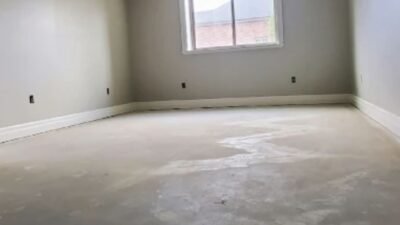If you are looking to know about Do Stairs need Support? You are at Right Place ,Yeah, stairs need support. A structural system is essential for every stair, whether it is for a residential or commercial purpose, to safely carry the load, maintain stability, and comply with the building codes. If the stairs do not have proper support, they will become unsafe and could easily collapse.
Understanding Stair Structure Basics
Stairs may seem simple, but in fact, they are a complicated system of interconnected parts. Those parts are treads (horizontal steps), risers (vertical portions), stringers (beams that are at an angle and carry the load), and sometimes landings, railings, and balusters. The joining of these parts must be done in a way that supports them so they can safely carry the people, furniture, and items that are going over them.
If any part of a stair is not properly supported, there is a big possibility that serious structural problems will occur. Therefore, stairs are always designed to transfer weight efficiently throughout their framework.
Types of Stair Support Systems
Staircases can be supported in a lot of different ways, and the system that is chosen is usually based on the design and the materials. Common types include:
- Closed stringer systems, where the stringers are hidden within the wall or boxed in on each side.
- Open stringer systems, where the outer edge of the stair structure is visible.
- Mono or central stringer systems, supported by a single, centrally located beam.
- Cantilevered stairs, where each step appears to float with no visible support.
Professional contractors and engineers often rely on building Takeoff services when planning stair support systems. These services estimate the material quantities and the structural needs at the design stage, thus making sure that the stairs satisfy safety and code regulations even before the construction process starts.
Role of Stringers in Supporting Stairs
Stringers are the main components of a stair structure that distribute the weight of the stair treads and risers to the building. They are the essential elements that enable the stairs to remain upright and stable. Usually, stringers run from the upper floor diagonally down to the lower one, and they are like beams that carry loads to the floor framing.
Furthermore, the quantity of necessary stringers for a staircase can change, according to the width and the materials of the stairs.
Table: Recommended Stringers Based on Stair Width
| Stair Width | Material | Recommended Stringers |
| Up to 36” | Wood | 2–3 (Minimum 3 for safety) |
| 36”–48” | Wood | 3–4 |
| 48” and above | Wood | 4 or more, spaced evenly |
| Up to 48” | Steel | 1–2 (Due to higher strength) |
| Floating Stairs | Steel/Engineered | Varies by design and anchor points |
Appropriate arrangement and good quality of stringers ensure that they are not subjected to sagging or any other incident of failure when carrying the load.
Load-Bearing Considerations
It is a fact that a staircase has to be capable of bearing both dead and live loads:
- Dead loads are the materials with which the staircase is constructed, such as wood, concrete, steel, and finishing.
- Live loads are the changing weights that are carried by people, furniture, and movement over time.
The building regulations usually set stair obligations that require the steps to be able to carry a minimum load of 300 pounds stationary. They also state that the entire structure must be able to bear dynamic use. If the support is insufficient, the stairs might produce noise, bend, or even collapse.
Does Every Staircase Need a Support Wall?
Although stairs do not necessarily have walls for their support, walls frequently ensure the lateral stability as well as the anchorage positions. Walls, on the other hand, are ideal for supporting stairs that go up to the ceiling as they provide the main frame of the structure.
When we speak of free-standing stairs, we mostly mean stairs designed for an open-concept house or a lobby in a commercial building where the construction is not contained within any walls. The latter may also be steel-based. Therefore, the
Code Requirements for Stair Support
Building codes are the minimum standards that are set for the requirements of safe stair construction. The International Residential Code (IRC) and the International Building Code (IBC) are two of the most important and widely recognized codes in the US for stair construction. They stipulate that:
- The highest allowed riser height should not be more than 7.75 inches
- The minimum allowable tread depth is 10 inches
- The minimal headroom that should be provided is 6 feet 8 inches
- The load capacity required is usually 40 pounds per square foot (psf)
These codes also set the maximum distance between stringers and the methods of fastening, thus ensuring that the safety and performance will last long.
Concrete Stair Support Systems
Constructing concrete stairs is the most common method of stairs in commercial buildings. This is because concrete stairs can carry heavy loads and are durable. There are two types of concrete stairs:
- Cast-in-place concrete stairs are made by pouring a fluid mixture at the construction site and reinforced with metal bars.
- Precast concrete stairs are factory-produced units that come as a whole and can be directly placed at the desired location.
The support of concrete stairs should be done by allowing the use of proper formwork during construction, and also by having a firm base that will facilitate load transfer evenly.
Steel Stair Support Techniques

Steel is the best material for stairs due to its strength and flexibility. Steel stairs are normally supported by:
- Steel beams or plates that are welded
- Connections that are bolted to floor slabs or framing
- A central I-beam or box tubing as a spine
Steel staircases are perfect in industrial spaces, modern residential properties, and floating staircases. This is because they can cover longer distances with fewer supports.
Wood Stair Support in Residential Buildings
Most houses in North America have wooden stairs. A standard procedure is to cut 2×12 stringers, install them with proper spacing, and secure them at both the top and bottom ends.
Extra reinforcement, such as blocking between stringers, joist hangers, and structural fasteners, makes sure that the staircase stays fixed and does not get twisted. Wood stairs will be strong as long as they are not exposed to moisture, termites, or heavy use.
Floating Stairs: Hidden Supports Explained
Floating stairs look like they have no support, but they are really dependent on precise engineering and a strong internal frame. Usually, every tread is fixed directly into a load-bearing wall or screwed to a steel bar, which is hidden under the floor or wall, besides the tread.
Here, the stairs are utilizing cantilevered supports, which means that the tread is extending horizontally but is rooted at only one end. In order to ensure that these stairs are safe notwithstanding their minimalist aspects, special welding, bolting, or reinforcement is carried out.
Spiral Stair Support Systems
Spiral stairs receive their support from a central column or pole, which is the only point of support for the whole staircase. Hence, each step twirls around this central support and is directly connected to it.
The base of the column must be securely fixed into the foundation or floor slab, while the top should be fixed to the upper floor or ceiling. Spiral stairs are still able to satisfy the load and code requirements since they are compact and space-saving, which is like traditional stairs.
Landings and Intermediate Support
Landings in multi-story buildings act as both safety features and structural support during long stair journeys. A landing is a flat platform between two flights of stairs; thus, it is necessary after a certain number of risers to avoid long, unsafe runs.
Support-wise landings split loads and generally act as a spot to tie the stairway running to floor framing or structural walls, hence the stress on main supports is reduced.
Under-Stair Framing and Bracing
Framing under a staircase not only makes the structure more sturdy but also improves the overall rigidity of the stairs. Additionally, blocking might be included between the stringers to ensure that twisting will not happen as the load increases. In the case of longer stair runs, the use of cross bracing or knee walls underneath the stairs can ensure that the stairs stay aligned and movement is minimized.
This hidden framing is typically the unsung hero of stair safety and can be retrofitted into older homes to reinforce wobbly or unstable stairs.
Foundation and Floor Support for Stair Systems
The stairs’ top and bottom parts must be secured to solid structures for stability. At the top, the stairs are tied into the floor joists using ledger boards, brackets, or framing connectors. At the bottom, they either sit on a concrete slab or are connected to lower floor framing.
Should any of the connecting points be weak, the whole stair may be prone to drift over time, and that might create unintended gaps, produce squeaking sounds, or become unstable.
Retrofit and Remodeling: Supporting Existing Stairs
Normally, stairs in old houses are quite bad, either due to deterioration or being constructed poorly. The main steps of retrofitting are:
- Reinforcing stringers with additional lumber
- Replacing rusted or damaged brackets
- Strengthening connections to the floor framing
During remodeling, contractors often refer to the Takeoff services for calculating the materials they need for replacement or reinforcement, especially if they are changing the staircases to fulfill the existing codes.
Common Support Issues and Failures

Problems occur when stairs are underbuilt or not maintained properly. Common failure signs are:
- Making a noise or moving while walking on them
- Walking surfaces that are bent or handrails that are not fixed
- Gaps visibly between the parts
- Uneven rise or slope
Not paying attention to these issues can result in a complete failure of the structure. At the right time, repairs and reinforcements are necessary to avoid injury.
Hiring a Professional vs DIY Support Work
Skilled homeowners can construct simple staircases, but the concept of structural stair design, particularly in the case of floating or steel stair systems, must always be done by experts. Structural engineers, fram
FAQs: Do Stairs Need Support?
1. Can you build stairs without stringers?
No. All stairs require structural supports like stringers, beams, or concealed steel framing to carry weight.
2. How many stringers are needed for a 36-inch staircase?
Usually three, especially for wooden residential stairs, to prevent sagging between treads.
3. Are floating stairs safe?
Yes, when properly engineered and anchored. Hidden steel or reinforced walls provide the support.
4. Can I retrofit an existing staircase?
Yes. Old stairs can be strengthened by sistering stringers, adding brackets, or replacing treads.
5. Is professional help necessary for stair design?
For complex stairs or code-compliant builds, hiring a contractor or engineer is highly recommended.
For more please visit here.




